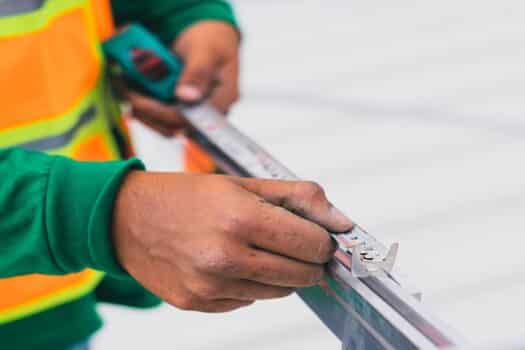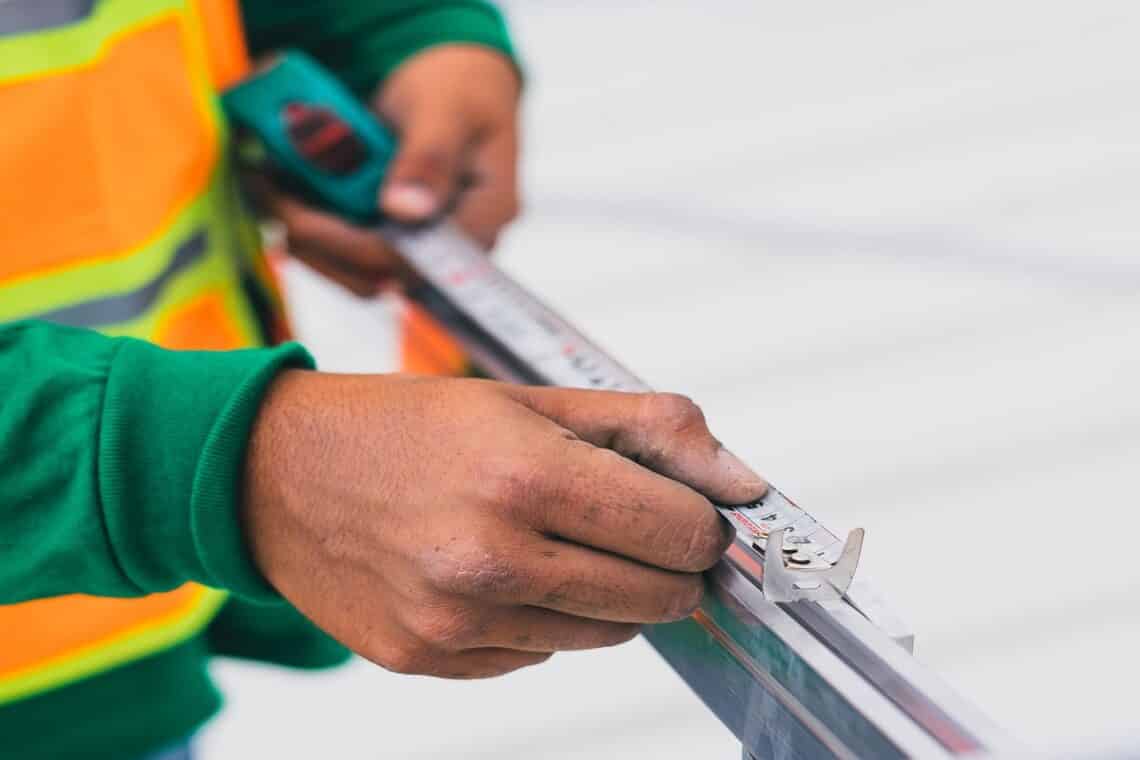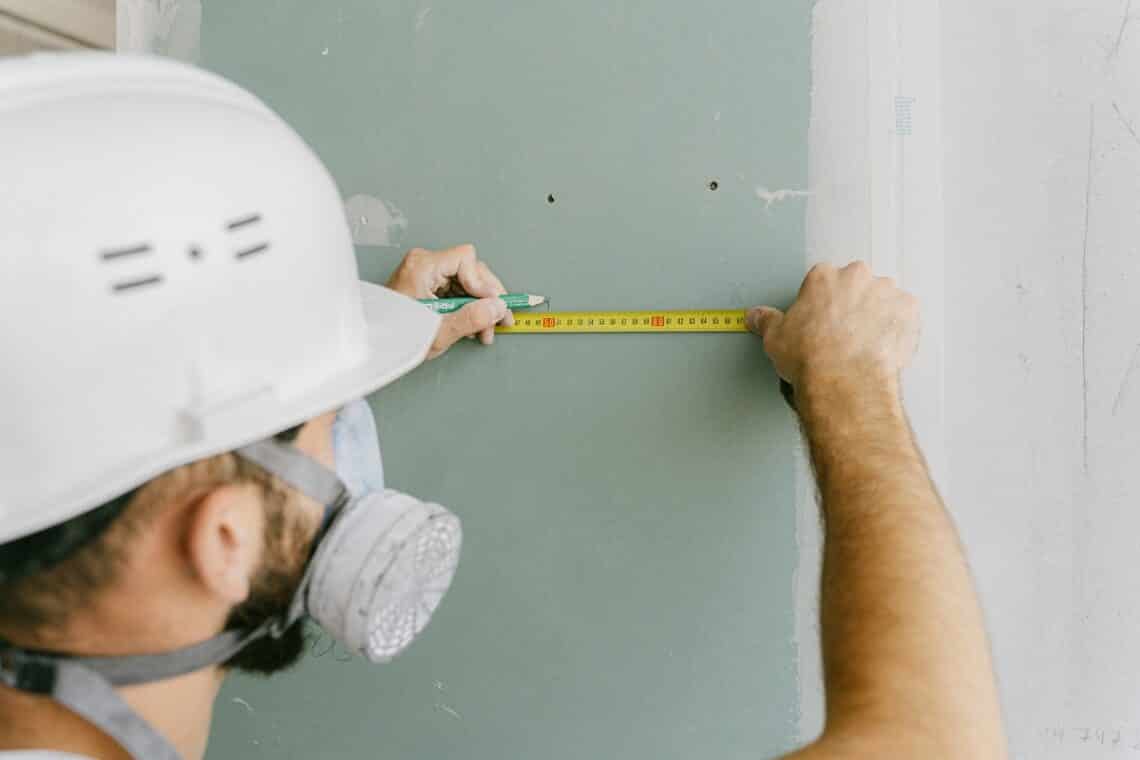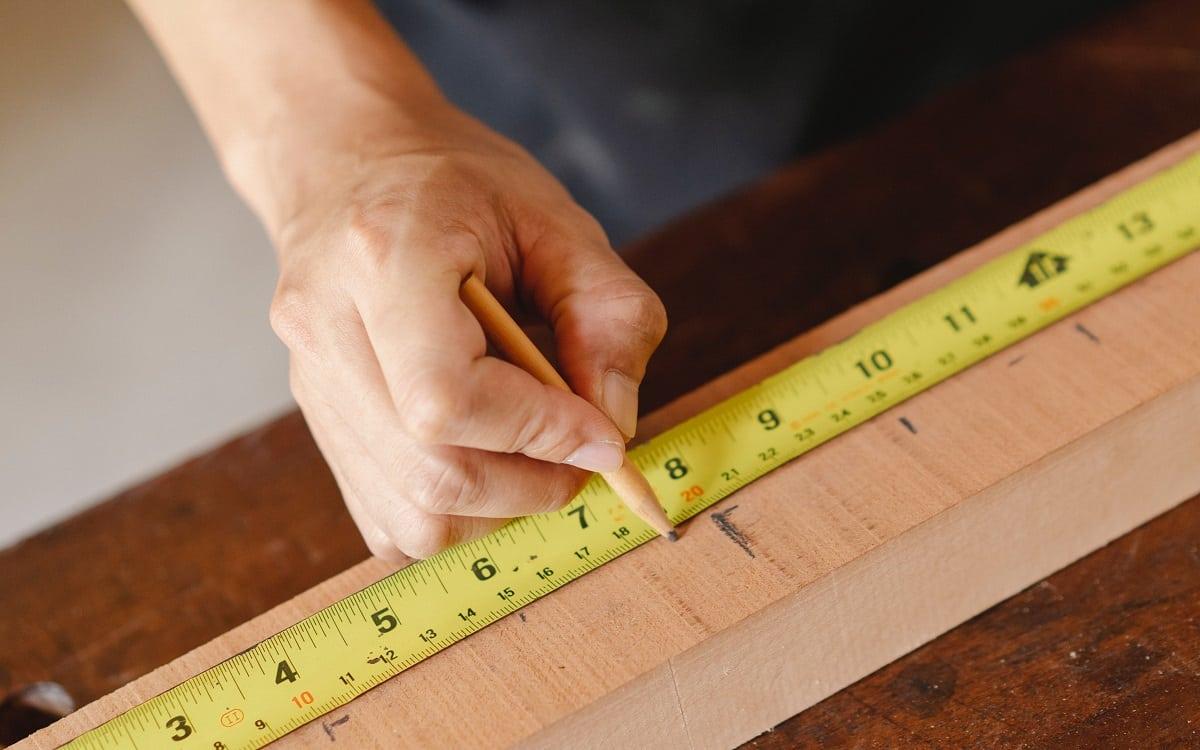Have you recently found out about linear foot measurement? If yes, don’t worry, we’ve got your back.
One of the most common problems seen in hardware stores is that people aren’t aware of the right unit of measurement. And, in such circumstances, even the salesperson can’t really help the customers.
That’s why we recommend you have an idea about the various ways in which certain materials and their requirements are measured. It may seem like a small problem, but if you’re a DIY-er or even getting your home renovated, knowing about the number of materials required, helps to develop a budget.
We are often surprised to know that most people still aren’t aware of exactly what the linear foot stands for. Hence, we took it upon ourselves to give you an extensive overview of this unit of measurement.
So, without further ado, let’s begin!
What Is A Linear Foot?

Let’s start with the basics. A linear foot is a common measurement used to assess the materials needed for a particular space. This measurement is taken in a straight line. The most important thing you would need to remember about it is that a linear foot equals one foot or twelve inches.
While taking this measurement, you don’t need to consider the height, width, or thickness of the surface. Rather, focus on the “linear” plain that’s flat. You may also hear this measurement being called the lineal foot or linear footing. And, to measure the length, all you need is a tape measure.
Moreover, the linear foot is an important measurement used in mapping the space of apartments and homes. You’ll definitely need to find it out before buying anything like lumber, flooring materials, fences, or even bedsheets.
How To Calculate Linear Feet?
Now that you know about what is the linear or lineal foot, let’s take a look at how you can actually measure it. As we said already, the most common tool used to take measurements is a tape measure. But, at times, you can also use a ruler to take precise measurements of a flat surface.
All you need to do is take the ruler or tape and measure the length of an object or a space. Usually, either of the tools will have the units marked in inches or centimeters. Hence, you may use an online unit conversion calculator to get the linear foot measurement.
Moreover, if you want to calculate it yourself, remember that one linear foot has 12 inches, so an object measuring 36 inches equals three linear feet.
Similarly, when you measure the length between two points, it can be considered a linear distance. As you may know, construction workers often need to map out an area, and using a tape measure would be quite inconvenient for the task. You can check out our article on the best measuring wheels to have a look at one of the most innovative devices.
What Is The Difference Between Linear Feet And Square Feet?
You should always remember that the linear footing measures a straight line, so it’s a measurement of length. On the other hand, square foot or square footing is a measurement of area and is two-dimensional in nature. To get a square foot value, you need to assess the length as well as the width of a space.
Besides, the square footing is used to measure the area of a whole room, whereas linear footage makes a good measurement for flooring. So, taking the length between two opposite walls in a room would give you linear footage. While taking the measurement of the distance between both sets of walls and then multiplying them would give the square footage.
How To Convert Square Feet To Linear Feet For Floorboards?
It’s easy to find the linear feet of a straight surface like a wall, as you only need to measure a straight line. But, things get complicated when you need to find the linear foot measurement. The easiest way to do this is by measuring the length and width of the space. Then, multiply the two numbers to get the square foot of the area.
For example, let’s take a proportionately square room with a width and a length of 12 feet, respectively. So, the total comes down to 144 square feet.
The next step is to measure the width of your floorboards and keep in mind to measure only the exposed surface. And, for easy calculations, we are going to turn the width into a decimal value. For example, you’ll need to take the number 2.5 inches for a floorboard that measures 21/2 inches.
The last step is to put the various values in this formula: (square feet x 12) / board width = linear feet. It’s a must for you to remember that one foot equals 12 inches.
Let’s test it by putting together the values from our examples. So, multiplying 144 square feet with 12 gives us the number 1,728. Dividing it further by 2.5 leaves us with a linear feet of 691.2 feet, and that’s the complete space of the room.
Which Things Are Sold By Linear Feet?
While thinking about home improvement, people are astonished to know the sheet number of things for which you need to calculate linear feet. So, we thought about giving an idea about them beforehand to help you save money.
1. Cabinets
Rather than using a two-dimensional measurement like square feet, cabinets are measured in linear feet. It is because a cabinet is usually stuck to a wall, so it occupies a linear space. If you calculate the linear feet of a wall, it gives an estimate of the length of a cabinet.
However, when it comes to measuring something that sits in the middle of a room, for example, a coffee table, you would need to calculate in square feet. Similar to cabinets, wallpapers are measured in linear feet with respect to the length of a wall.
If you’re interested in checking out the latest measuring gadgets, do take a look at our article on the newest laser measuring tools.
2. Trim
You must have noticed that the edges of walls, doors, and windows often have thin borders that are known as trims or moldings. These trims help to create a clean frame for the area to give a seamless look. Therefore, you need to be very careful while measuring the total length of trim that’s needed.
To get the right length of trim, the whole perimeter of the edge is measured. If there are bends, you can measure each part individually and add them to get the square feet. Having a rough estimate lets you save the cost of buying extra.
3. Boards
Boards are yet another construction item that is sold by the measurement of linear feet. However, do remember that it’s best to know both the linear feet and square feet measurements to figure out the right amount of material required.
Before purchasing the boards, you’ll need to measure the area where they would be fitted. The simplest forms of the board have to be the lumber planks you see at the hardware store.
As you may have seen, there are employees in the store to help the customers by cutting the boards into the correct dimensions. So, failing to give them a proper measurement may leave you with unusable materials.
Furthermore, we have noticed that floorboards tend to be a bit tricky to measure. It also requires you to measure both the linear feet and square feet length of the space. And, make sure to measure each floorboard carefully along with taking care of half-boards and any other trimmings.
On that note, it’s always a good idea to add 10% more to the square footage to account for the waste. Some people also suggest adding a margin of 20% if you’re going for tiled patterns for the floor.
Advantages Of Linear Foot In Moving
Let’s be honest, we already have too many things on our hands, so it doesn’t seem useful to learn a new measurement. But, you can’t be more wrong. Think about a time when you are changing homes, and decide to take the help of a moving truck.
Most of moving companies like to measure a room in linear footage rather than going through measuring each piece of furniture. So, not knowing the linear measurements may cost you heavily, especially when it comes to avoiding unnecessary fees.
The trucking industry usually believes in charging for the total space your things are occupying in a truck. Hence, there isn’t a need to pay more, just because your items are heavier. You can check out our article on finding a professional moving service, to find the right company.
Yes, there are options to get a single trailer that can hold a lot of your stuff, but it might not be ideal if you’re thinking about making shorter strips. In that case, most companies charge you a minimum of five linear feet, and the rest is up to your calculations.
Hence, before disrupting everything in your home, try to find out the linear footage that’s occupied at the moment to assess the total space required. If you’re using palettes, remember to calculate how much space they take up, rather than calculating the linear length of those things on a floor.
Do note that some freight trailer companies have come up with specific estimates regarding the linear footage measurement of rooms. Hence, to get the most out of a moving truck or trailer space, ask the company beforehand about all the terms and conditions.
Moreover, we find it best to ask for an upfront quote to assess if it works for your budget. And, do inquire about any possibility of deductions if you don’t end up taking up as much space as your prior estimate.
What Is The Cube Rule Of Moving Companies?
As we have said already, linear feet remain the standard way to measure for most companies. However, some may use the cube rule to charge for lighter or fluffier things that require more space in a freight trailer. This space is usually calculated in cubic feet, a three-dimensional measurement. So, along with the length and width of an item, you’ll also need to consider its height.
For booking freight trailers, especially commercial variants, you have to give a company the correct measurement of cubic feet. Calculating the cubic feet shouldn’t be an issue if you have already learned how to measure linear feet.

Final Words
That’s everything we have to tell you about a linear foot. We hope that we have cleared your doubts regarding the linear measurement, and all the information would prove enormously helpful while taking in tasks like home improvement.
Having said that, at first, it may seem a little daunting to take the measurements yourself. But, with practice, you’ll be able to calculate linear feet the same way as hardware store owners or construction workers.
Furthermore, we would like to note that you don’t need to learn all the formulas for the different measurements. Just have it in your mind, or come back to this guide for a quick refresher. And, do let us know in the comments about any queries you might have regarding how to calculate linear feet.
Till then, goodbye, and take care.
Related Articles
9 Best Laser Level For Hanging Pictures
25 Best Gifts for Construction Workers This Year
What Is A Veranda | All You Need To Know
What Is A Pony Wall? | Things To Know






